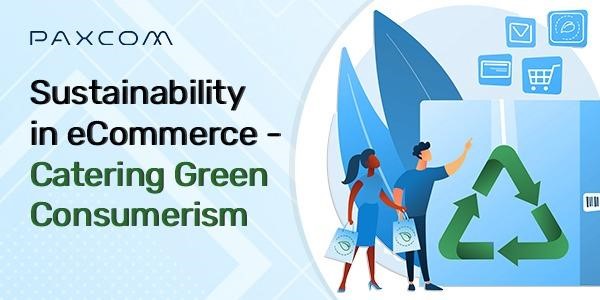Sustainability in eCommerce isn’t just a trend. It’s become the new normal – and how you do business matters to your customers. While sustainability has been gaining traction in supply chain management, consumers are becoming more aware of the impact brands and products have on the world. Due to growing consumer demand for sustainable products, many businesses are now forced to rethink their operations, material sourcing, and product development processes to ensure that they produce green goods that appeal to customers.
In this article, we will discuss the considerations for sustainability in eCommerce and how sellers can adapt to changing customer expectations while still remaining profitable.
Table of Contents
What do our Green Consumers want?
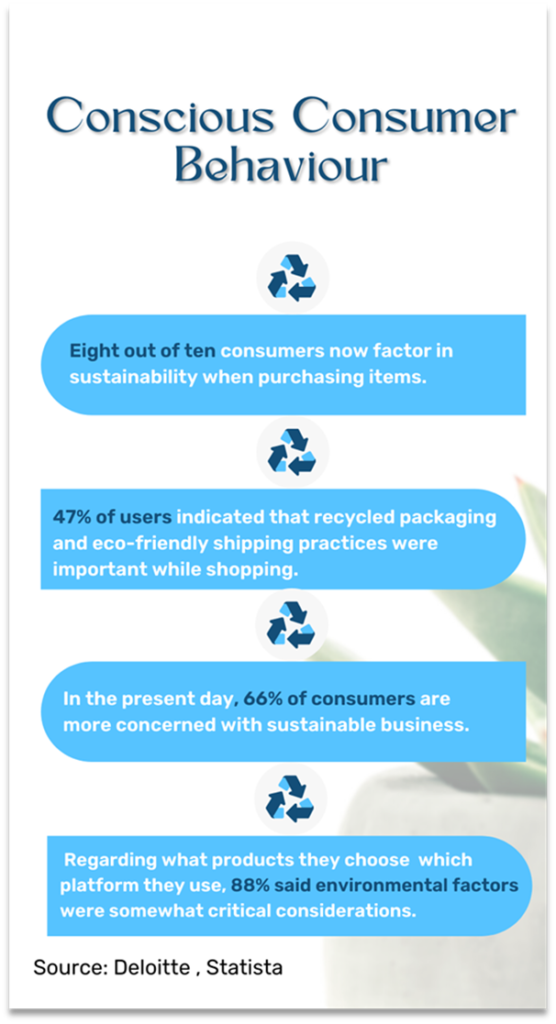
How does serving conscious consumers falls on Brands?
With the increase in wokeness and growing concern about climate change, countries are pleading with the ‘Paris Climate Act’. Users think it is up to brands to comply with the change and not them.
- If the brand offered carbon-neutral shipping at the same cost as standard shipping, 66% said they would be more likely to buy.
- A third of respondents said they expect e-commerce sites to begin selling “greener” products.
While we have all been raving about consumers’ dependence on convenience, we live in a world of Amazon and quick commerce, where users expect their products to be delivered in a day or two. So, the bigger question is: what would a consumer choose? The convenience of fast delivery or sustainable shipping methods? The answer would be convenience, right?
So now the confusion lies here; like we said, 88% of them want to buy sustainable products and demand eco practices, but with easy access and no burn in their pockets. The onus of serving them falls on brands. In order to stay ahead of the saturated market race, you can start by imbibing sustainable practices and maintaining your SDG goal score.
How can you build a customer journey to promote sustainability?
Everything works better in layers, right? So why not follow a layered approach to promote sustainability? Yes, it sounds a bit vague, but stay with us for a little while.
The approach involves identifying the unified customer profile, including internal, social, and eco-friendly information, and leveraging the eco-friendly catalog and product set the shopper intends to buy. This layer looks at KPIs like clickstreams, past purchases, wish lists, desired product items, online and in-store transactions, gift purchases, visits, and customer basket metrics.
1. Create a sustainable supply chain to reduce carbon footprint
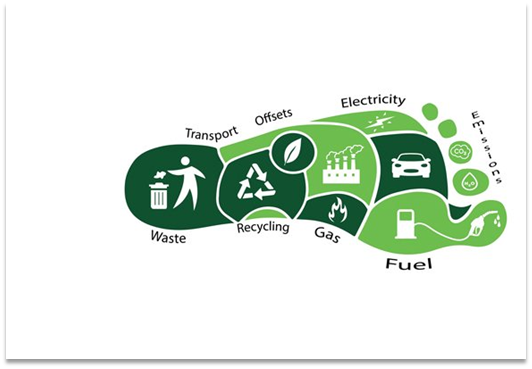
The supply chain is also a big part of an e-commerce company’s carbon footprint. There is the potential for significant reductions here, and many brands have already begun:
- Shipment improvements. Ship as many items together as possible in smaller packages.
- Changing packaging. Usage of recycled and recyclable materials as much as possible while steering clear of Styrofoam.
- Partnering with a green delivery company More and more logistics companies offer environmentally friendly delivery services. Some even operate electric vehicles.
- Optimizing return strategy- Emphasizing in-store returns; replacing items without forcing customers to return the original product; re-using or refurbishing returned goods.
Sustainability has become an essential component of exports when you are into global marketing, for instance, India has launched a sustainable project titled “SURE”- “resolution firm” to accomplish the pledge to resource a substantial portion of total consumption with environmentally friendly materials by 2025, posits AEPC.
2. Combine orders to reduce carbon emissions
The retailer will ship your items in separate packages if you order more than one (especially if one of the items is back-ordered/out of stock).
However, you will be using more resources when you do this. Consider this. With two packages alone, that’s two trips, two van trips, and twice as much carbon emissions.
When possible, combine multiple orders into one package. By explaining the benefits of waiting a little longer, you can improve your brand’s green credentials, and they will also reap the benefits of receiving all ordered items at once.
3. Promote your eco-friendly initiatives
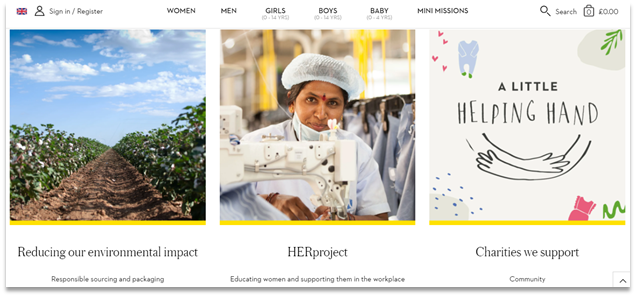
To keep your eCommerce practices sustainable, keep your consumers informed of your new brand initiatives. Through your brand, you can introduce the concept of sustainability. Your brand is the way you connect with your customers, and via that, they create an image of you.
Consider updating your company’s mission to include sustainable practices, creating campaigns (there are so many days designated to protect the climate now, so why not use them for good), or donating to an organization that supports social welfare.
Also, did you know in a recent Amazon update, it was identified that Amazon UK was giving more traction to climate pledge friendly product, that itself show a big mogul company too vouching for the same.
4. Make your product mix sustainable
Incorporate more sustainably-focused products in your catalog as another impactful initiative. To decrease the environmental footprint of your products, you might update existing products or change your supply chain, as we discussed in the first point. Marketing these products can help your business stand out on the market and meet your sustainability in eCommerce goals. On the plus side, many eCommerce marketplaces are supporting that.
Example 1- Walmart has created an online shopping destination called Built for Better to help customers find products and brands that align with their healthy food, clean living, or sustainability goals. “Built for Better” is also part of Walmart’s multi-channel marketing campaign, encouraging customers to “Live Better Tomorrow.”

Example 2- As part of Amazon’s sustainable labeling program, four certifications were added from diverse groups, including health and organic certifications. With the launch of its “Climate Pledge Friendly” initiative, the e-tailer now boasts more than 30 sustainability certifications.

Example 3- On Target’s website and in stores, you can find “wellness icons” that identify products that are non-toxic, clean, cruelty-free, or dye-free.

Example 4- Being green is part of the culture at BigBasket. When products are shipped directly from wholesalers to consumers, many carbon emissions are reduced, reducing the number of cars on the road. To minimize the use of paper and plastic bags, all products are delivered in crates, which are then taken back for reuse. Fruit and vegetable trays are recyclable, and customers are requested to return them for reuse.
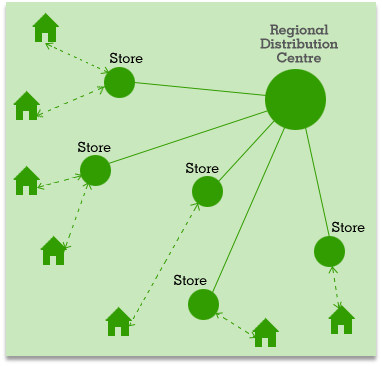
So, you can see how prominent marketplaces are making space for incorporating and promoting sustainable practices.
5. Build awareness around it to attract new customers
You can get your audience to embrace sustainability by providing educational content. With Amazon’s customer engagement tool, you can send emails to your customers and raise their awareness about the product or the concept.
Update your social media accounts so that you can share relevant news and content with your customers about your sustainability in eCommerce initiatives. Therefore, sustainable shopping is made more accessible to shoppers, and more awareness is generated for those who may not have previously been aware.
6. Resell used products to contribute to circular economy
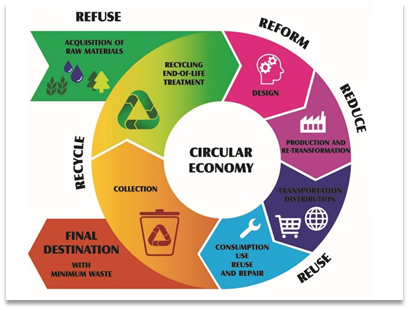
Many Genz and Millennials are actually starting the thrift store concept, wherein you can resell the products at a lower price. Embrace the circular economy, what happens is usually consumers dispose of their products when they are tired of it- especially in fast fashion. Marketplaces like eBay, Wish, Etsy, even Amazon with refurbished electronics items let you resell your products.
The circular economy promotes repurposing products by enabling them to be passed on to a second or third owner after they have been used up by their first. Recycled products can then be used to create new ones.
Here are some examples of eCommerce brands and their marketing strategies to get some inspiration for green marketing
1. 4Occean
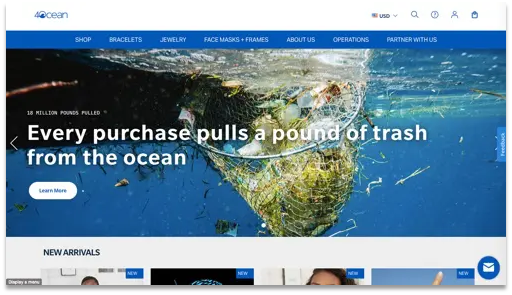
The goal of 4ocean is to end the ocean plastic crisis. In support of its mission, it sells jewelry, apparel, and reusable items online. The “One Pound Promise” that comes with 4ocean products ensures that 1 pound of trash is removed from the ocean, rivers, and coastlines.
2. Artisans Nest

The local brand uses only pre-consumed textile waste that otherwise would end up in landfills. Excess, considered scrap, is then repurposed as woolen cushions and bean bags.
3. Adidas ft. Parley of Oceans

Adidas and Parley for Oceans collaborated on a project that involved the production of 7,000 pairs of shoes entirely made from ocean plastic. After selling out instantly, another five million teams went into production, resulting in a billion-dollar line of products.
Bottom Line
The sustainability in eCommerce movement continues to remain top of mind for both sellers and customers. Consumers demand that the brands they support prioritize and actively seek out ways to better the environment. You can influence the pillars of the environment right down to the products on the shelves by educating your consumer and integrating your eCommerce marketing with social media. We hope that this blog helps you strike the right balance between profitability and sustainability. You can reach us at info@paxcom.net if you’re interested in learning more about eCommerce.
